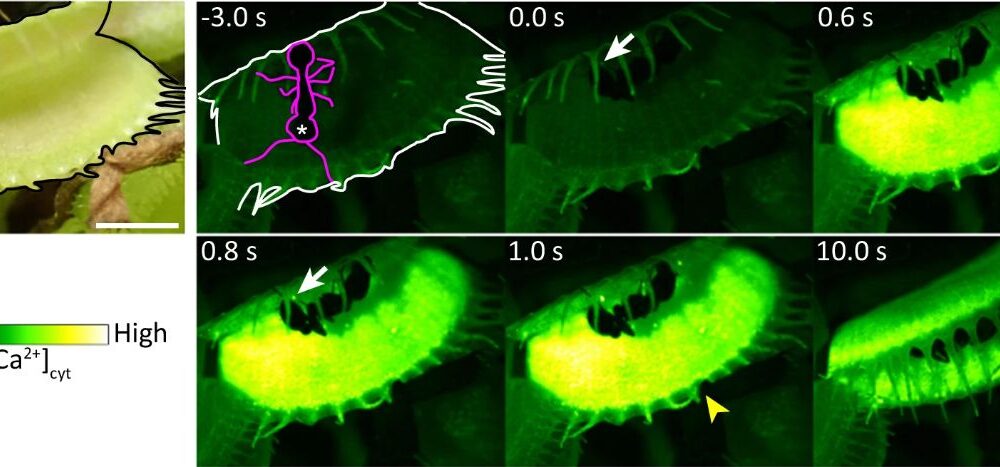Carnivorous plants, particularly the Venus flytrap (Dionaea muscipula), have long captivated scientists due to their unique ability to rapidly ensnare prey. Recent research published in Nature Communications by a team led by Hiraku Suda sheds light on the underlying mechanism that enables this swift response. The study reveals the crucial role of a mechanosensor known as DmMSL10, which is essential for the plant’s sensitivity to touch.
The Venus flytrap relies on specialized sensory hairs lining its leaves to detect stimuli. These hairs use calcium threshold signals to trigger action potentials, which ultimately lead to the trap’s closure when prey is detected. While the general function of these sensory hairs has been known, the specific mechanisms remained unclear until now.
In the study, researchers created a genetically modified version of the plant that lacked the DmMSL10 mechanosensor. They discovered that although both the wild-type and knockout variants responded to mechanical stimulation by releasing calcium ions, the knockout variant exhibited a significantly reduced rate of action potential generation. The wild-type continued to generate action potentials even after the stimulation ceased, highlighting the importance of DmMSL10 in processing even slight touches.
To further illustrate this finding, the team conducted an experiment in which ants were allowed to wander on the leaves of both variants. The wild-type Venus flytrap successfully captured the first ant that touched its leaf, while the knockout variant failed to respond, not even twitching as multiple ants walked across it. This stark difference underscores the vital role DmMSL10 plays in prey detection.
With this research, scientists now have a clearer understanding of how D. muscipula generates long-range calcium signals that enable the plant to capture its prey—rich sources of protein and nitrogen. The implications of this study extend beyond the Venus flytrap; it may provide insights into how similar mechanosensory mechanisms evolved in other organisms, including animals.
Future research could delve deeper into the evolutionary pathways that led to the development of such sophisticated touch-response mechanisms in both plants and animals, highlighting the interconnectedness of life on Earth.







